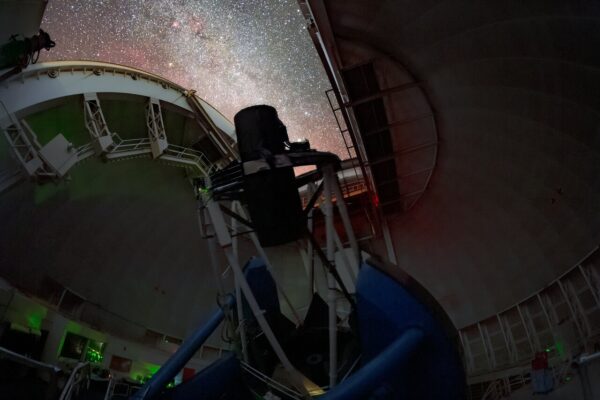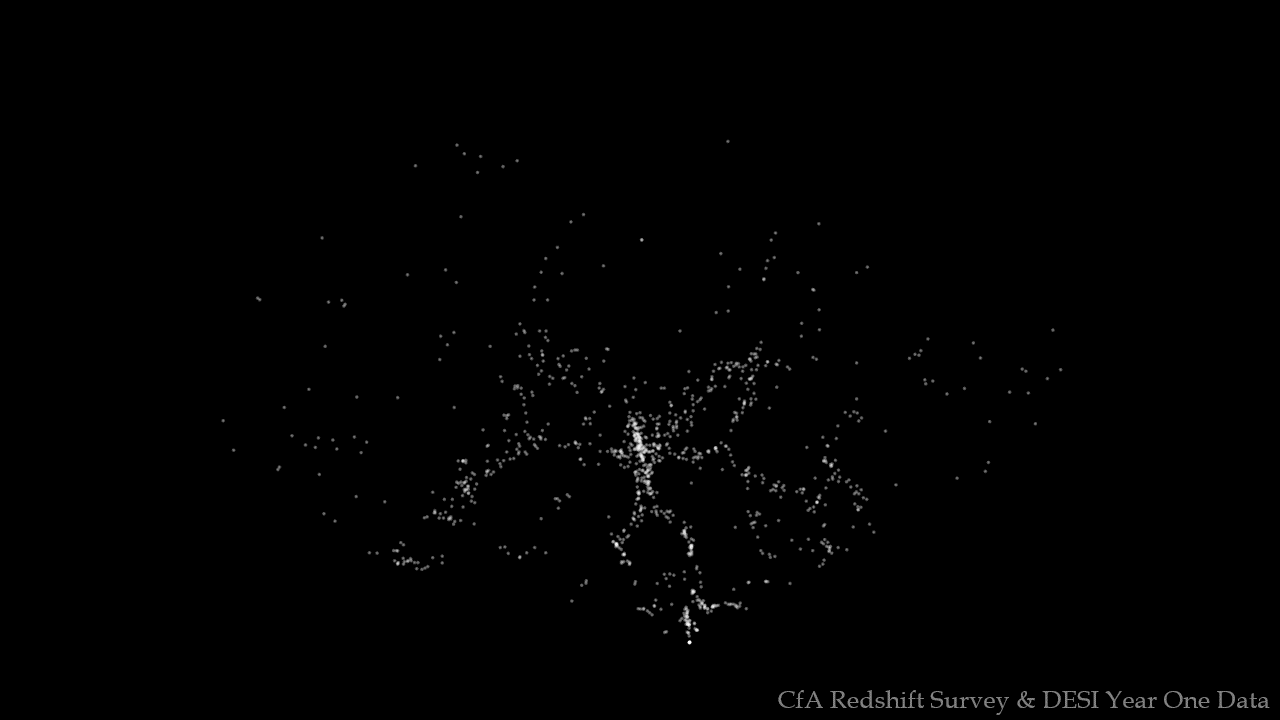Joan Najita (NOIRLab)
12 February 2024 was a spectacular night for DESI: it broke its own record and acquired nearly 200,000 redshifts in a single night. The figure is remarkable, especially in the context of history.

Forty years ago, the first and second CfA redshift surveys acquired spectra of 2200 and 15,000 galaxies respectively, giving us the first glimpses of the large scale structure of galaxies. Rather than being distributed randomly, galaxies were found to cluster in a froth-like structure, arranged on bubble-like surfaces surrounding large volumes mostly devoid of galaxies. In these pioneering surveys, redshifts were painstakingly acquired one at a time. As a result, the first CfA redshift survey took 5 years to acquire its 2200 redshifts (1977-1982). In comparison, on 12 February DESI acquired 100 times that number in a single night.
Rather than taking spectra of galaxies one at a time, DESI can acquire 5000 spectra at once through its 5000 robotically positioned fibers. Tiny robots center each fiber on an object (galaxy, quasar, or star). After an exposure is done, the fibers are quickly repositioned, within 1-2 minutes, and DESI is ready to acquire spectra of another 5000 objects. On 12 February, the seeing at the Mayall Telescope was very good (0.65 arcseconds) and DESI was able to go through the setup process more than 40 times. (The gory details: DESI observed 41 dark tiles, 4 bright tiles, and 2 backup tiles that night.)
While February’s weather was relatively poor, DESI still managed to acquire 1.8 million spectra over the month. The quick progress keeps DESI on track to complete its planned survey of 30 million galaxies and quasars and 10 million stars within 5 years. By measuring the large scale structure of galaxies at high precision, the DESI survey will lend new insights into the expansion history of the Universe and the nature of dark matter and dark energy.
